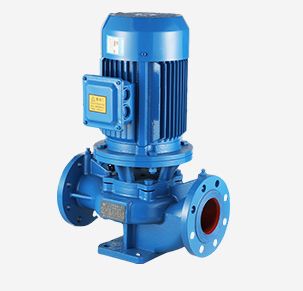English
- Afrikaans
- Albanian
- Amharic
- Arabic
- Armenian
- Azerbaijani
- Basque
- Belarusian
- Bengali
- Bosnian
- Bulgarian
- Catalan
- Cebuano
- Corsican
- Croatian
- Czech
- Danish
- Dutch
- English
- Esperanto
- Estonian
- Finnish
- French
- Frisian
- Galician
- Georgian
- German
- Greek
- Gujarati
- Haitian Creole
- hausa
- hawaiian
- Hebrew
- Hindi
- Miao
- Hungarian
- Icelandic
- igbo
- Indonesian
- irish
- Italian
- Japanese
- Javanese
- Kannada
- kazakh
- Khmer
- Rwandese
- Korean
- Kurdish
- Kyrgyz
- Lao
- Latin
- Latvian
- Lithuanian
- Luxembourgish
- Macedonian
- Malgashi
- Malay
- Malayalam
- Maltese
- Maori
- Marathi
- Mongolian
- Myanmar
- Nepali
- Norwegian
- Norwegian
- Occitan
- Pashto
- Persian
- Polish
- Portuguese
- Punjabi
- Romanian
- Russian
- Samoan
- Scottish Gaelic
- Serbian
- Sesotho
- Shona
- Sindhi
- Sinhala
- Slovak
- Slovenian
- Somali
- Spanish
- Sundanese
- Swahili
- Swedish
- Tagalog
- Tajik
- Tamil
- Tatar
- Telugu
- Thai
- Turkish
- Turkmen
- Ukrainian
- Urdu
- Uighur
- Uzbek
- Vietnamese
- Welsh
- Bantu
- Yiddish
- Yoruba
- Zulu
Telephone: +86 13120555503
Email: frank@cypump.com
Nov . 10, 2024 14:06 Back to list
Comparison of Single Suction and Double Suction Centrifugal Pumps and Their Applications
Single and Double Suction Centrifugal Pumps An Overview
Centrifugal pumps are vital components in a variety of industrial applications. Among them, single and double suction centrifugal pumps are widely used for handling liquids efficiently. Understanding the differences between these two types of pumps is essential for choosing the right equipment for specific applications.
Design and Function
Centrifugal pumps operate on the principle of converting rotational energy, typically from an electric motor, into the kinetic energy of fluid. This is achieved through the use of a rotating impeller, which throws the fluid outwards, creating a pressure difference that allows the fluid to flow through the system.
Single suction pumps feature a single inlet to draw fluid into the impeller. The design is straightforward, making single suction pumps easier to manufacture and maintain. These pumps are commonly used in applications where flow rates are moderate and where the fluid being moved isn't significantly viscous or abrasive.
Double suction pumps, on the other hand, use two inlets to draw fluid into the impeller from both sides. This design effectively balances the hydraulic forces acting on the impeller and reduces the axial thrust, which can enhance the pump’s longevity and reliability. Double suction pumps are typically used in larger installations that require higher flow rates or where fluid viscosity is a concern.
Performance and Efficiency
The performance of centrifugal pumps is often evaluated in terms of flow rate, head, and efficiency. Single suction pumps tend to perform adequately in smaller systems or applications that do not require high flow rates. They can operate at a satisfactory efficiency level, but their performance is sometimes limited by the design.
Double suction pumps excel in larger applications where high efficiency and flow rates are essential. Their design allows for improved hydraulic performance with lower energy consumption compared to their single suction counterparts. As a result, double suction pumps are more capable of managing larger volumes of fluid, making them ideal for municipal water supply, irrigation, and large-scale industrial applications.
single and double suction centrifugal pump

Applications
Both single and double suction centrifugal pumps find their way into numerous applications across various industries.
- Single suction pumps are often used in agricultural irrigation systems, water supply for small municipalities, and in HVAC systems where the fluid flow is moderate
. - Double suction pumps, known for their efficiency, are commonly utilized in large water treatment plants, power generation facilities, and other industrial processes where the demand for flow is significant.Given their efficiency and high capacity, double suction pumps are also preferred in applications that require handling large volumes of liquids with minimal energy use.
Maintenance Considerations
Maintenance is crucial for ensuring the longevity and efficiency of both types of pumps. Single suction pumps typically require less maintenance due to their simpler design. Regular checks on seals, bearings, and impeller performance can prolong their life and efficiency.
Double suction pumps can require more intensive maintenance given their complexity. Monitoring the balance of hydraulic forces and ensuring the integrity of both suction sides is vital. However, when properly maintained, both types of pumps can operate effectively for many years.
Conclusion
In conclusion, both single and double suction centrifugal pumps play essential roles in a myriad of applications across various industries. The choice between using a single or double suction pump depends largely on the specific requirements of the application, including flow rate, efficiency, and maintenance capability. Understanding their unique characteristics can guide users in selecting the appropriate pump for optimal performance and reliability in their operations.
-
Horizontal Split Case Pump with GPT-4 Turbo | High Efficiency
NewsAug.01,2025
-
ISG Series Pipeline Pump - Chi Yuan Pumps | High Efficiency, Durable Design
NewsAug.01,2025
-
Advanced Flue Gas Desulfurization Pump with GPT-4 Turbo | Durable & Efficient
NewsJul.31,2025
-
ISG Series Vertical Pipeline Pump - Chi Yuan Pumps | Advanced Hydraulic Design&Durable Construction
NewsJul.31,2025
-
ISG Series Vertical Pipeline Pump - Chi Yuan Pumps | Energy Efficient & Low Noise
NewsJul.31,2025
-
pipeline pump - Chi Yuan Pumps Co., LTD.|High Efficiency&Low Noise
NewsJul.31,2025










